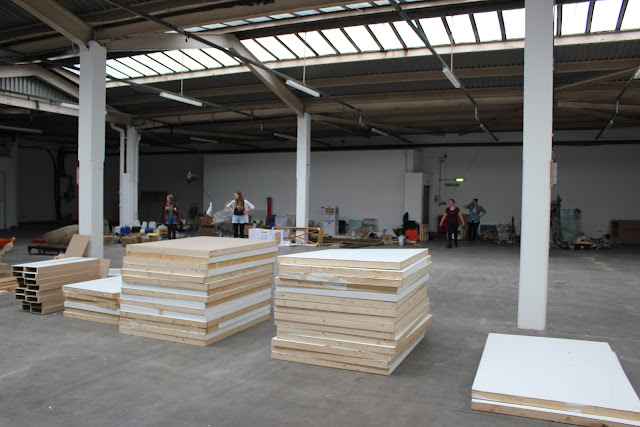My own drawings hung still, held aloft only by meagre masking tape. Inarguably simplistic in their presentation (especially considering the photographer exhibiting next to me had built their own soil-covered room to house their images), I enjoyed the edition of the brick canvas but largely allowed the drawings to speak for themselves.
The ongoing project from which they were taken, Please Wait… documents scenes of suspended motion in a culture that never stops. I see the ordinary situations depicted here as exquisite moments of serenity where nothing is demanded of us and we are free to think and to exist, so took great joy in seeing people pausing to reflect on them for a time. Admittedly speaking against the priorities of every coffee-fuelled Londoner that passed me on the escalator on the way in, the drawings express the philosophy that waiting can be everything that we are rushing around trying to achieve. Perhaps they should try it.
 Synthia magazine in situ in the reading area.
Synthia magazine in situ in the reading area.
Children drawing Hollie Mackenzie's Downfall.
 Through the space.
Through the space.
Thames Trumpet floor vinyl by Kieran Leonard.
 The Wilson Project by George Bills.
The Wilson Project by George Bills.One of my favourite things about how the show functioned was the artwork's interaction with the idiosyncratic brewery space. Artists worked directly onto the walls and floor, Mackenzie's stairs looked as if they could have once been part of the room's structure and Hastie & Clothier's digital pieces were framed by pipes and industrial remnants; the environment was embraced to symbiotic effect. The vernacular of the space did not detract away from the artefacts placed there, but did add something new that the pieces successfully bounced off; a reward to those artists who created artwork possessing the ability to hold its own whilst not being afraid to absorb qualities and moods from its surroundings.




 Left: Agent Zigzag series by
Left: Agent Zigzag series by 














